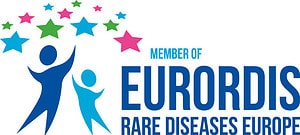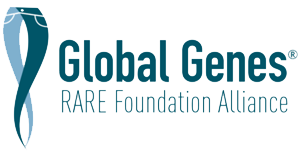General Info
Overview
Lactic acidosis occurs when lactate and other molecules, called protons, build up faster than the body can remove them. This can cause low levels of oxygen in body tissues. Lactate is a normal substance made by many organs in the body including the skin, red blood cells, brain, skeletal muscles, and gastro-intestinal tract. Other organs take lactate and use it or break it down.
Genetics
Cause and Genetics
Lactic acidosis can have many different causes. It can occur alongside many medical conditions and is often present in severely ill patients who are hospitalized. Some individuals develop high lactate at birth, others have persistent high lactate levels, and still others have only occasional increases brought on by other illnesses, such as infection, seizure, or asthma attack.
Most forms of congenital lactic acidosis, meaning types that are present at birth, are caused by genetic changes affecting the mitochondria. These genetic changes, or mutations, are passed down in a family by one or both parents, or they can be a new change that occurred when a baby was first developing.
Although genetic mitochondrial diseases are the most common causes of congenital lactic acidosis, additional conditions that are present at birth can result in the disorder. These can include:
- Biotin deficiency
- Bacterial infection in the bloodstream or body tissues called sepsis
- Certain types of glycogen storage disease or diseases that affect the way the body stores sugars
- Reye syndrome
- Short-bowel syndrome
- Liver failure
- A defect in the heart or blood vessels that leads to a deficiency in the amount of oxygen reaching the body’s tissues called hypoxia
- Bacterial meningitis which causes elevated lactic acid in cerebrospinal fluid
Frequency
Affected Biological Gender
Male
Signs and Symptoms
Signs and symptoms of an episode of lactic acidosis can include:
- Pain or discomfort in the abdomen or generally
- Loss of appetite
- Diarrhea
- Muscle pain, ache, burning or cramping
- Fast breathing
- Nausea
- Increased tiredness or weakness
- Headache and/or mild confusion
The additional signs or symptoms of someone with a congenital form of lactic acidosis can vary widely based on the underlying cause. In some cases, especially those with a severe enzyme defect, symptoms of congenital lactic acidosis develop within the first hours or days of life and may include loss of muscle tone (hypotonia), extreme tiredness (lethargy), vomiting, and abnormally rapid breathing (tachypnea). Eventually, the condition may progress to cause developmental delay, intellectual disability, movement differences, behavioral differences, physical changes of the face and head, and multi-organ failure. In some individuals in whom the disease is due to a mutation in mitochondrial DNA, the complications of congenital lactic acidosis may not appear until adolescence or adulthood.
Diagnosis
Newborn Screening: Recommended Uniform Screening Panel (RUSP)
Yes
Treatment
Treatment and Management
Treatment for lactic acidosis is generally based on the symptoms someone has and the root cause (if known). This may include:
- Consuming certain vitamins and co-factors (ie carnitine and coenzyme Q)
- “Ketogenic” diets/ diets that are very high in fat and very low in carbohydrate have been used in patients with Pyruvate Dehydrogenase Complex deficiency (PDC), with beneficial effects reported in the scientific literature.
- Dichloroacetate (DCA) has been investigated as a potential therapy for individuals with congenital lactic acidosis. Various studies have shown the drug to be well-tolerated in children and to lead to a reduction in lactic acid levels in many patients with various causes of congenital lactic acidosis. However, the clinical benefit of chronic DCA treatment for any type of congenital lactic acidosis has not yet been demonstrated by controlled clinical trials. In addition, the drug has been shown to worsen or to cause reversible peripheral nerve damage in some individuals with congenital lactic acidosis, especially in older adolescents and adults. Recent studies, however, indicate that this potential side effect may be mitigated or prevented by careful dosing, based on a person’s particular genotype.
- Arginine may be used as a treatment for certain mitochondrial conditions associated with lactic acidosis
Clinical Trials
For specific details on clinical trials visit the MitoAction Clinical Trial page or www.clinicaltrials.gov.
Resources
Connecting with others impacted by a rare disease allows for vital information to be shared about day-to-day life, prevents isolation, and gives hope. Please contact MitoAction for peer support opportunities at 888-MITO-411 or email mito411@mitoaction.org.
Other resources we recommend are:
- New Patient Kit for Mitochondrial Conditions
- Planning for Emergencies
- Monthly Expert Series
- Energy in Action Podcast
MitoAction does not provide medical advice, diagnosis, treatment, or legal advice. It is essential that all those living with or caring for someone with a Mitochondrial or FAOD disease have an emergency protocol letter. These letters, which are written and signed by a doctor, share details about prescribed treatment during crises and in emergency room settings. Always check with your doctor if you or your child has concerns as everyone may present with symptoms differently. Before beginning any treatment or therapy, please consult with your physician.
Last Updated: 11/15/2022









